Best Easy Plants to Grow: Foolproof Picks for Beginners
- February 7, 2024
- 0 comment
Gardening is a pastime cherished by many for its therapeutic benefits and the sheer joy of nurturing life. However, the journey to a flourishing garden can be daunting for beginners and those with busy schedules. This guide is designed to demystify gardening by introducing a selection of plants that promise ease of care, resilience, and satisfaction. Whether you possess a green thumb or are new to the soil, these plants will pave the way to a garden brimming with life and color.
Table of Contents
- Understanding Plant Growth Basics
- Top Easy-to-Grow Indoor Plants
- Easy-to-Grow Outdoor Plants
- Easy Vegetables and Herbs to Grow
- Conclusion
- FAQs
Understanding Plant Growth Basics
Before we delve into our plant selection, grasping a few fundamentals can significantly enhance your gardening success. These essentials ensure that your gardening efforts yield fruitful results, regardless of the plant variety.
Choosing the Right Location
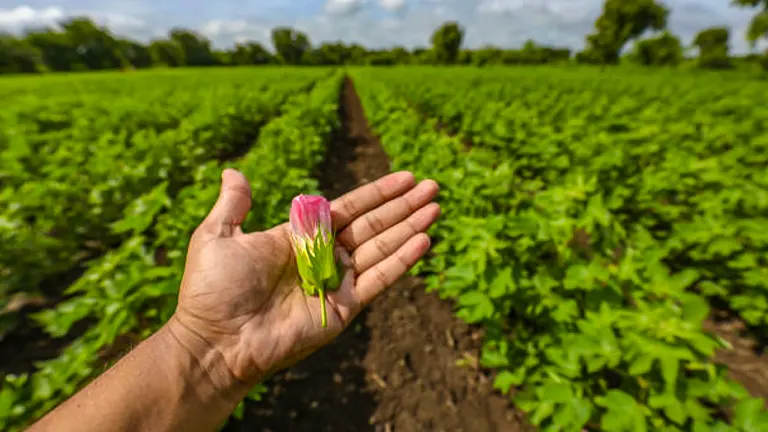
The cornerstone of plant growth lies in the correct placement within your space. Plants thrive under specific light conditions full sun, partial shade, and full shade. Assessing the light availability in your garden or home can help you match plants to their preferred environments. Moreover, understanding the type of soil in your garden whether it’s sandy, clay-rich, or loamy can guide you in selecting plants that will thrive in your conditions or in making necessary soil amendments.
Watering Essentials
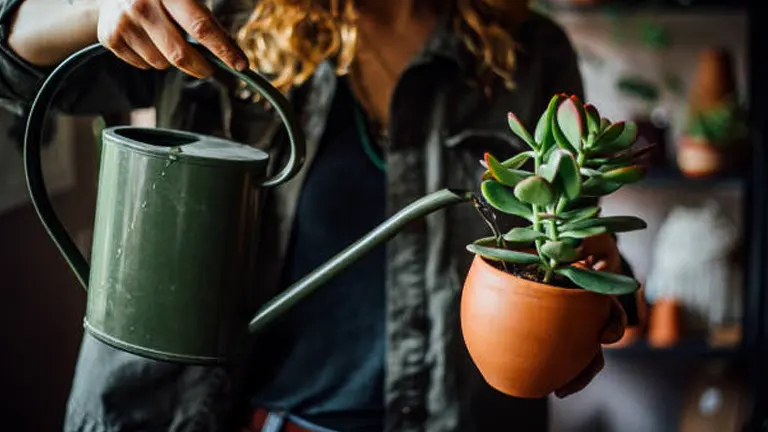
Water is life for plants, but its application requires balance. Over-watering can lead to root rot, while under-watering can stress plants. Most easy-to-grow plants prefer a consistent moisture level that allows their roots to grow deep and strong. Learning the signs of thirst in plants, such as drooping leaves or dry soil, will help you maintain the perfect watering schedule.
Fertilization and Care

While many beginner-friendly plants are not demanding in terms of nutrition, understanding the basics of fertilization can promote healthier growth. A general-purpose, slow-release fertilizer applied during the growing season can support your plants’ needs without the complexity of specialized formulas. Additionally, simple pest management practices, such as inspecting plants regularly and using natural deterrents, can keep your garden thriving.
Top Easy-to-Grow Indoor Plants
Indoor gardening offers a splendid way to greenify your living space, purify the air, and even improve your mood. Here are some of the best plants to start your indoor garden, each chosen for their simplicity in care and ability to thrive in a variety of indoor conditions.
Spider Plant (Chlorophytum comosum)
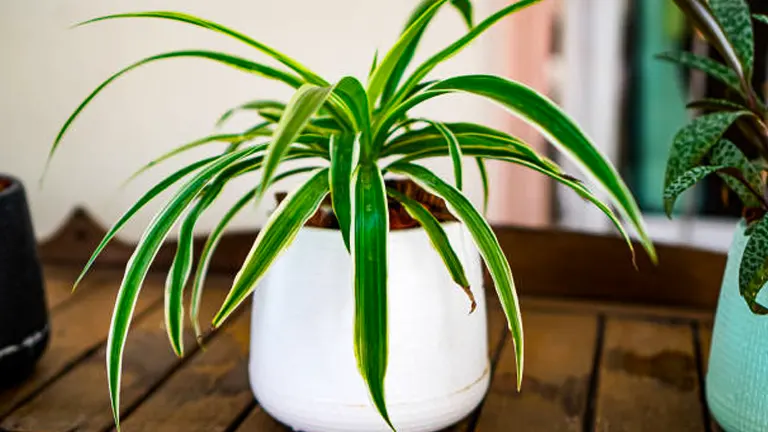
One of the most resilient and easy-to-grow houseplants, the Spider Plant, is known for its adaptability to a wide range of conditions. It prefers bright, indirect light but can tolerate lower light levels, making it perfect for rooms with few windows. Watering is straightforward: allow the soil to dry out slightly between waterings. The Spider Plant is also celebrated for its air-purifying qualities, capable of removing toxins from indoor environments. Plus, its offshoots can be easily potted to grow new plants, offering endless greenery for your home or to share with friends.
Snake Plant (Sansevieria)
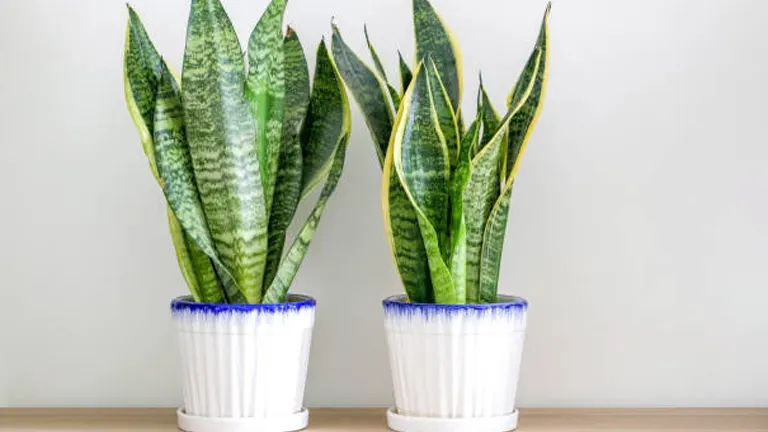
The Snake Plant, with its striking upright leaves, is a favorite among indoor gardeners for its near-indestructibility. It thrives in anything from low light to direct sunlight, making it suitable for any corner of your home. Water sparingly, as its thick leaves store moisture, requiring only occasional watering when the soil is completely dry. Beyond its ease of care, the Snake Plant is known for its ability to release oxygen at night, making it an excellent bedroom companion for better air quality and sleep.
ZZ Plant (Zamioculcas zamiifolia)
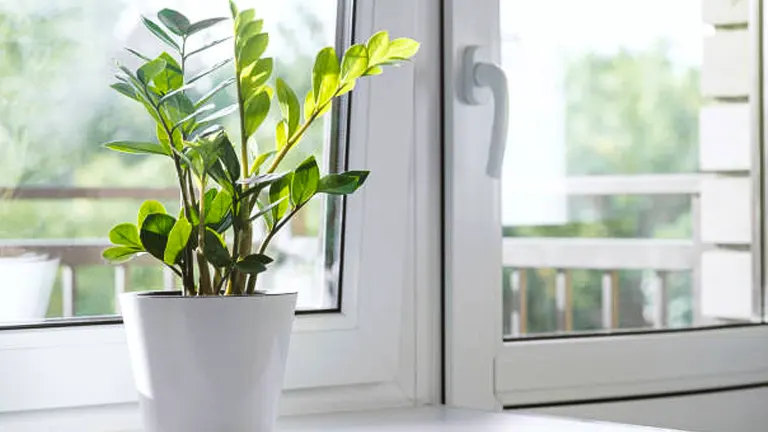
Renowned for its waxy, lush leaves and robust nature, the ZZ Plant is the epitome of low-maintenance. It flourishes in low-light conditions and requires minimal watering, making it ideal for those who might not have a green thumb. Allow the soil to become dry to the touch before watering thoroughly. The ZZ Plant is not only an attractive addition to any room but also possesses the ability to withstand neglect, making it a perfect choice for busy individuals or those new to indoor gardening.
Easy-to-Grow Indoor Plants Table
| Plant Name | Light Requirements | Watering Frequency | Soil Type | Additional Care Tips | Unique Benefit |
|---|---|---|---|---|---|
| Spider Plant | Bright, indirect light | Allow soil to dry slightly between waterings | Well-draining, loamy | Keep in cooler temperatures (55-65°F/13-18°C) at night; fertilize sparingly every month during spring and summer. | Produces oxygen and purifies air; non-toxic to pets. |
| Snake Plant | Low light to direct sunlight | Water every 2-6 weeks, depending on light and temperature | Free-draining, sandy | Virtually indestructible; prefers slightly pot-bound conditions. Store in temperatures above 50°F (10°C). | Releases oxygen at night; improves indoor air quality. |
| ZZ Plant | Low to bright indirect light | Every 2-3 weeks, allowing soil to dry completely between waterings | Well-draining potting mix | Avoid direct sunlight to prevent leaf scorching; very drought-tolerant. | Highly efficient in purifying air from toxins; very low maintenance. |
Overall Insights:
- Adaptability: The Spider Plant, Snake Plant, and ZZ Plant are highly adaptable to a variety of indoor conditions, demonstrating that successful indoor gardening is accessible to everyone, regardless of their experience level or living conditions. Their ability to thrive in different light conditions from low light to bright, indirect light highlights their versatility and resilience.
- Low Maintenance: All three plants require minimal watering and can tolerate some degree of neglect, making them perfect for those who may not have a lot of time to dedicate to plant care or are prone to forgetting about their green companions. This low-maintenance aspect ensures that even the busiest individuals can enjoy the benefits of indoor plants.
- Air Purification: A unique and valuable benefit of these plants is their ability to purify the air. The Spider Plant and Snake Plant, in particular, are known for their ability to remove toxins and improve indoor air quality, with the Snake Plant also releasing oxygen at night. This makes them not just decorative elements, but also functional additions to any home, contributing to a healthier living environment.
- Aesthetic and Psychological Benefits: Beyond their practical care requirements and environmental benefits, these plants offer aesthetic value and psychological advantages. Bringing greenery indoors can enhance the beauty of any space, creating a more inviting and relaxing atmosphere. The presence of plants in indoor settings has been linked to reduced stress levels, improved mood, and increased creativity and productivity.
The Spider Plant, Snake Plant, and ZZ Plant stand out as exemplary choices for indoor gardening due to their ease of care, robustness, and air-purifying properties. They serve as a testament to the idea that gardening should be accessible and enjoyable for everyone, regardless of their lifestyle or gardening expertise. By incorporating these plants into your home, you can enjoy not only the visual and atmospheric enhancement they bring but also the health benefits and satisfaction of nurturing life. Whether you are a seasoned gardener or just beginning to explore the world of indoor plants, these selections promise to enrich your indoor living space with minimal effort for maximum reward.
Maintenance Tips for All Indoor Plants
For these indoor plants, and indeed most varieties that thrive indoors, a few general maintenance tips can ensure they remain healthy and vibrant:
- Light: Always consider the natural light available in your home when placing plants. While many easy-to-grow species are forgiving, optimal light conditions will encourage stronger growth.
- Water: Over-watering is a common issue in indoor gardening. Ensure pots have drainage holes and check the soil’s moisture level before adding water.
- Pests: Keep an eye out for common indoor pests such as spider mites or aphids. Regularly wiping leaves with a damp cloth can prevent infestations and keep your plants looking their best.
Indoor plants not only add a touch of nature to your living space but also offer a rewarding experience as you watch them grow and thrive with minimal effort. By starting with these easy-to-care-for varieties, you set the stage for a healthy, green environment that enhances your home and well-being.
Easy-to-Grow Outdoor Plants
Creating a vibrant garden doesn’t require a green thumb, just the right plant choices. Here are some of the best outdoor plants that promise low maintenance while transforming your garden into a colorful retreat.
Marigolds (Tagetes)
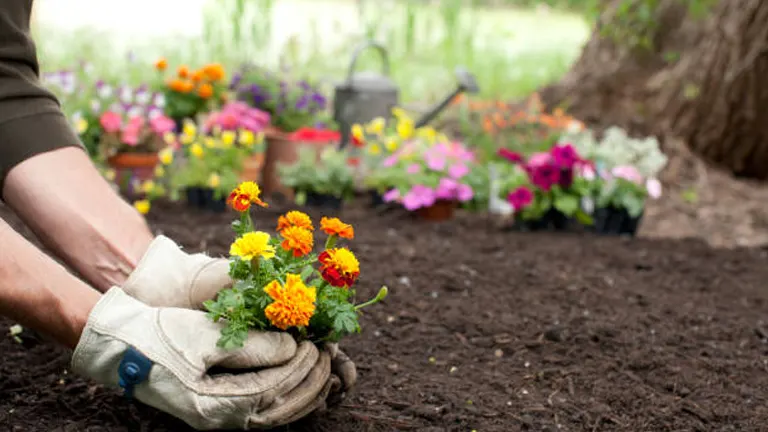
Marigolds are the golden staples of the garden world, celebrated for their vivid colors and ease of care. These cheerful blooms prefer full sun and well-draining soil but are remarkably adaptable to various conditions. Plant marigold seeds directly in your garden after the last frost, and watch them sprout and bloom in just a few weeks. Regular watering and occasional deadheading (removing spent flowers) will encourage continuous blooms throughout the summer. Besides their aesthetic appeal, marigolds are natural pest deterrents, making them excellent companions for vegetable gardens.
Lavender (Lavandula)
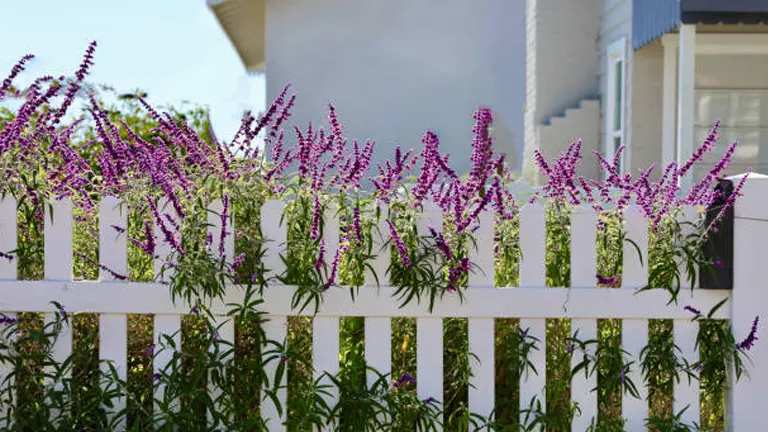
Lavender is not only beloved for its fragrance and beauty but also for its resilience and drought tolerance once established. Choose a sunny spot with well-draining soil, as lavender thrives in dry, sandy conditions. Watering should be infrequent once the plants are established, making them perfect for gardeners seeking low-maintenance options. Lavender’s aromatic flowers can be harvested and used in a variety of ways, from culinary recipes to homemade potpourri, bringing a piece of your garden indoors.
Sunflowers (Helianthus annuus)
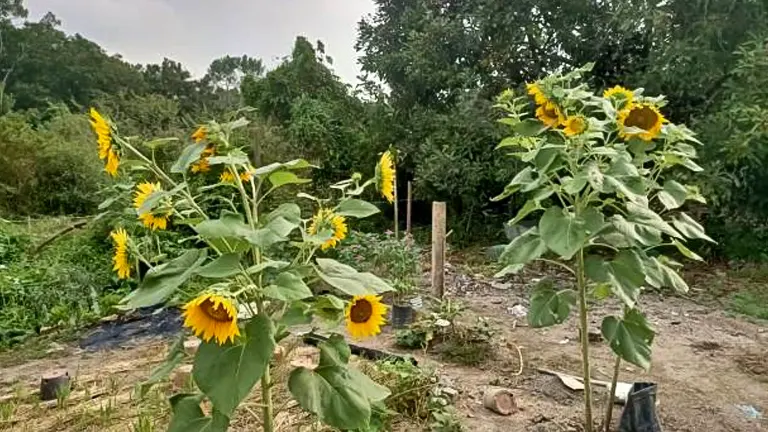
Sunflowers are the giants of the garden, reaching for the sky with their towering stems and bright, sunny faces. These plants are incredibly easy to grow from seed and prefer a sunny location where they can bask in direct sunlight for most of the day. Sunflowers are not picky about soil, though well-draining soil enriched with compost will support their rapid growth. Water them regularly during their growth phase, and you’ll be rewarded with spectacular blooms that also attract pollinators like bees and birds to your garden.
Easy-to-Grow Outdoor Plants Table
| Plant Name | Light Requirements | Watering Frequency | Soil Type | Additional Care Tips | Unique Benefit |
|---|---|---|---|---|---|
| Marigolds | Full sun | Moderate (allow soil to dry slightly between waterings) | Well-draining, fertile | Deadhead to encourage more blooms; plant near vegetables to deter pests. | Natural pest deterrent; vibrant colors enhance garden aesthetics. |
| Lavender | Full sun | Low (drought-tolerant once established) | Well-draining, slightly alkaline | Prune after flowering to maintain shape; use gravel mulch to improve drainage. | Aromatic flowers can be used in cooking, crafts, and for relaxation. |
| Sunflowers | Full sun | Moderate (regular, deep watering) | Well-draining, nutrient-rich | Provide support for tall varieties to prevent stem breakage. | Seeds are edible and can be harvested for food or bird feed. |
Overall Insights:
- Versatility and Benefits: These plants are chosen for their versatility in various garden settings and their unique benefits. Marigolds act as a natural pest deterrent, Lavender offers aromatic flowers for a range of uses, and Sunflowers produce seeds that can feed both humans and birds.
- Ease of Care: Emphasizing low maintenance requirements, these plants are suitable for gardeners of all levels. They share a common need for well-draining soil and moderate to low watering, making them resilient choices for outdoor gardens.
- Aesthetic Value: Beyond practicality, each plant adds significant aesthetic value to a garden. Marigolds bring vibrant color, Lavender adds a soothing blue hue and fragrance, and Sunflowers stand tall, offering a striking visual focal point.
- Environmental Impact: Beyond beautifying garden spaces, these plants contribute positively to the environment. They support pollinators, improve air quality, and in the case of Sunflowers, provide a habitat and food source for wildlife.
Marigolds, Lavender, and Sunflowers exemplify the joy and simplicity of gardening. They offer a gateway to cultivating a beautiful and thriving outdoor space with minimal effort, making gardening an accessible and rewarding hobby. The key to success lies in understanding the specific needs of each plant and providing the right conditions to flourish. By doing so, gardeners can enjoy the dual benefits of a garden that is both visually stunning and ecologically beneficial.
Maintenance Tips for All Outdoor Plants
To ensure your outdoor garden thrives with these easy-to-grow plants, here are some general maintenance tips:
- Sunlight: Most outdoor plants, especially those listed here, benefit from full sun. Positioning them in sunny spots will ensure they grow healthy and strong.
- Watering: While these plants are generally low maintenance, regular watering during dry spells will keep them vibrant. It’s crucial, however, to avoid over-watering, as this can lead to root problems.
- Soil: Good soil is the foundation of a healthy garden. Amend your garden soil with compost to improve its structure and fertility, benefiting plant growth.
By choosing these easy-to-grow outdoor plants, you can enjoy a lush and colorful garden that doesn’t demand constant attention, leaving you more time to relax and enjoy the beauty of your outdoor space.
Easy Vegetables and Herbs to Grow
Growing your own vegetables and herbs is not only immensely satisfying but also adds fresh flavors to your meals. Here are some top picks that are easy to grow and care for, even for those new to gardening.
Cherry Tomatoes
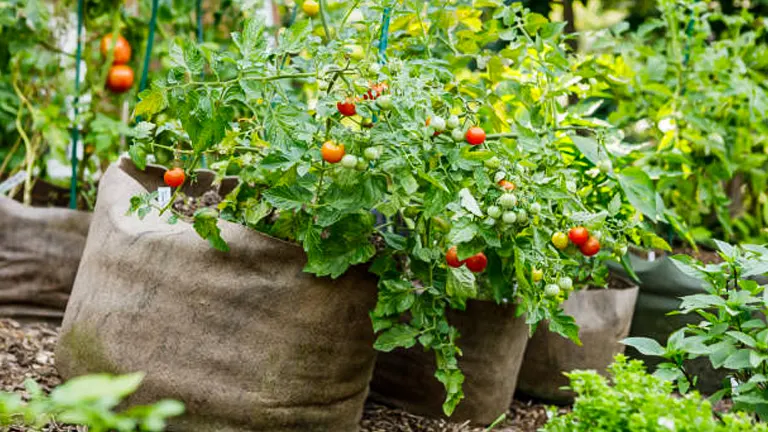
Cherry tomatoes are a joy to grow, offering sweet rewards throughout the summer. They thrive in full sun and well-draining soil, requiring regular watering to keep the soil consistently moist. Start seeds indoors about 6-8 weeks before the last frost, or purchase young plants from a nursery to transplant into your garden or containers. As they grow, support them with stakes or cages to help manage their vigorous vines. Cherry tomatoes are ready to harvest when they’re firm and fully colored. Regular picking encourages the plant to produce more fruit, extending your harvest season.
Basil

Basil is a fragrant and versatile herb that grows well in both gardens and containers. It prefers warm temperatures and plenty of sunlight, so place it in a spot that receives at least 6 hours of direct sun daily. Plant basil in moist, well-draining soil after the threat of frost has passed. Water regularly, keeping the soil slightly moist but not waterlogged. Pinch off the tips of the plants to encourage bushier growth and prevent early flowering. Harvest leaves as needed, and consider frequent harvesting to promote continuous growth and prevent the plant from going to seed.
Zucchini
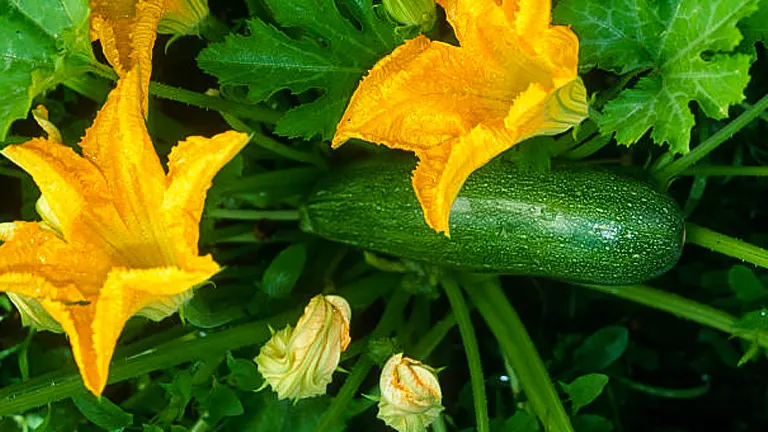
Zucchini is known for its prolific yield, even from just a few plants. These summer squash prefer full sun and fertile, well-draining soil. Sow seeds directly in the ground after the last frost, spacing them about 2 feet apart to give them room to spread. Water consistently, aiming for moist soil, but be careful not to overwater. Zucchini will start to produce fruit within a few weeks of flowering. Harvest zucchini when they’re small to medium in size (about 6 to 8 inches long) for the best flavor and texture. Regular harvesting encourages more fruit production.
Easy Vegetables and Herbs to Grow Table
| Plant Name | Light Requirements | Watering Frequency | Soil Type | Additional Care Tips | Unique Benefit |
|---|---|---|---|---|---|
| Cherry Tomatoes | Full sun | Consistent moisture needed; water daily in hot weather | Well-draining, fertile | Use cages or stakes for support; mulch to retain moisture and prevent diseases. | High in vitamins A and C, perfect for salads and snacking. |
| Basil | Full sun | Keep soil moist; water every other day in hot weather | Well-draining, rich | Pinch off flower heads to encourage bushier growth and more leaf production. | Enhances flavor in cuisines; has anti-inflammatory properties. |
| Zucchini | Full sun | Regular watering, especially during fruit set | Well-draining, fertile | Mulch to retain moisture; monitor for squash bugs and mildew. | Abundant producer; versatile in cooking. |
Overall Insights:
- Accessibility: Cherry tomatoes, basil, and zucchini are highly accessible for gardeners of all levels. Their basic needs, such as full sun and regular watering, align with common garden conditions, making them simple to integrate into various garden setups.
- Nutritional and Culinary Benefits: These plants offer significant nutritional benefits, with cherry tomatoes rich in vitamins, basil known for its anti-inflammatory properties, and zucchini offering a versatile cooking ingredient. Growing these plants can enhance your diet and culinary experiences, providing fresh, homegrown produce right from your garden.
- Gardening Rewards: Beyond the tangible yields, the act of growing these vegetables and herbs offers intrinsic rewards, such as the satisfaction of tending to living plants and the joy of harvesting your own food. This process can foster a deeper connection with nature and a sense of accomplishment.
- Environmental Impact: Cultivating your own vegetables and herbs can reduce your carbon footprint by minimizing the need for store-bought produce, which often involves packaging and transportation. Additionally, these plants can contribute to biodiversity and soil health in your garden.
Growing cherry tomatoes, basil, and zucchini epitomizes the essence of vegetable gardening: nurturing life, enjoying the fruits (and vegetables) of your labor, and contributing positively to your health and the environment. These plants are not just easy to grow; they are gateways to learning more about the rhythms of nature and the benefits of sustainable living.
Maintenance Tips for All Edible Plants
Growing vegetables and herbs is rewarding, and with a few maintenance tips, you can ensure a successful harvest:
- Mulching: Apply a layer of mulch around your plants to help retain soil moisture, regulate soil temperature, and reduce weed growth.
- Feeding: Use a balanced, all-purpose fertilizer early in the growing season to provide essential nutrients, especially for container-grown plants.
- Pest and Disease Management: Keep an eye out for common pests and diseases. Use natural or recommended treatments to manage any issues promptly to avoid damage to your plants.
By starting with these easy-to-grow vegetables and herbs, you can enjoy the freshness of homegrown produce and the satisfaction of tending your own garden. Whether you have a spacious backyard or a small balcony, these plants offer a gateway to the joys of gardening.
Conclusion
Embarking on a gardening adventure can be one of the most rewarding experiences, offering not just a bounty of fresh produce and beautiful blooms but also a profound sense of achievement and well-being. By starting with plants that are easy to grow, you set yourself up for success and lay the foundation for a thriving garden that can be enjoyed with minimal stress and maximum pleasure. Remember, every gardener’s journey is unique, filled with learning opportunities and moments of joy. With the right plants and a bit of care, your garden will flourish, providing a lush oasis that reflects the dedication and love you’ve invested in it.
FAQs
- What’s the easiest plant to start with for a complete beginner?
Spider plants and marigolds are among the easiest for beginners, requiring minimal care while offering rewarding growth. - How often should I water my indoor plants?
It varies by plant, but a general rule is to water when the top inch of soil feels dry to the touch. Over-watering is a common mistake, so ensure good drainage. - Can I grow vegetables indoors?
Yes, many vegetables, like cherry tomatoes and basil, can be grown indoors with sufficient light. A sunny windowsill or a grow light can provide the necessary conditions. - What should I do if my plant starts to wilt?
Wilting can be a sign of both over-watering and under-watering. Check the soil moisture; if it’s dry, water your plant, but if it’s soggy, let it dry out more between waterings. - How do I know if my garden has the right soil for these plants?
Most easy-to-grow plants aren’t picky but thrive in well-draining soil. You can amend your soil with compost to improve its quality. A simple soil test kit can provide more insights. - When is the best time to plant outdoors?
Generally, after the last frost in spring for most summer-blooming plants and vegetables. However, check specific plant requirements as some may vary. - Can I use tap water for my plants?
Yes, but if your area has hard water, consider letting it sit overnight before watering plants to allow some chemicals to evaporate, or use rainwater when possible. - How can I make my flowers bloom more?
Ensure they’re getting enough sunlight, water them appropriately, and consider using a balanced, slow-release fertilizer. Deadheading spent flowers can also encourage more blooms.
Dive into gardening with these easy picks and discover the joys of growing. It’s all about patience, care, and a bit of curiosity. Whether inside or out, each plant brings its own magic to your space. So, grab your gardening gear and let’s bring those green dreams to life. Here’s to a thriving garden filled with beauty and joy. Happy gardening!

Benjamin Brooks
Forestry AuthorGreetings! I'm Benjamin Brooks, and my journey over the past 15 years has revolved around the fascinating realms of content creation, expertise in snow clearing, and the intricate world of lumberjacking and landscaping. What began as a simple curiosity about the natural world and heavy machinery has evolved into a passionate profession where my love for crafting words intertwines seamlessly with my lumberjacking and garden skills.













Leave your comment